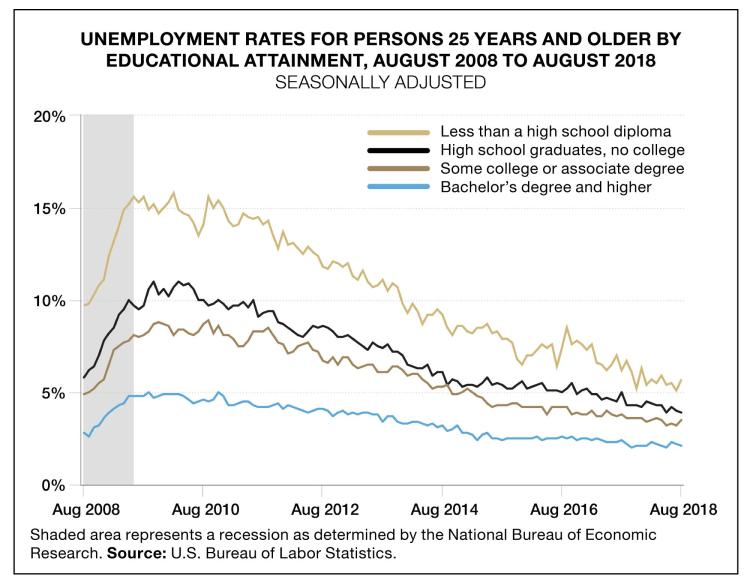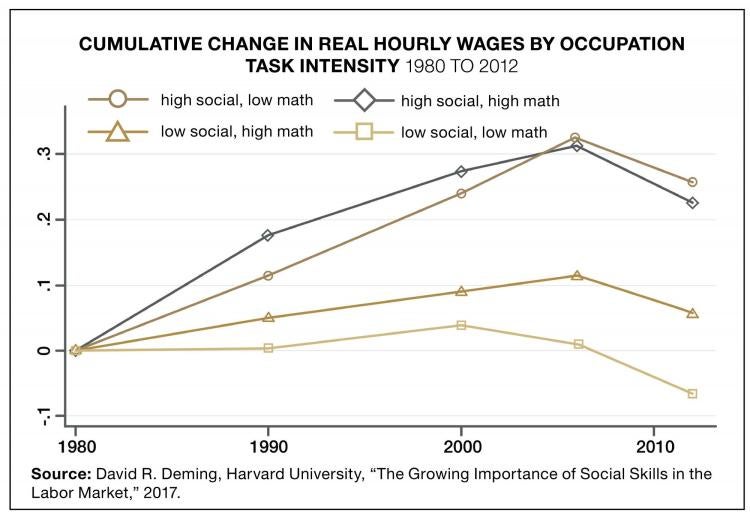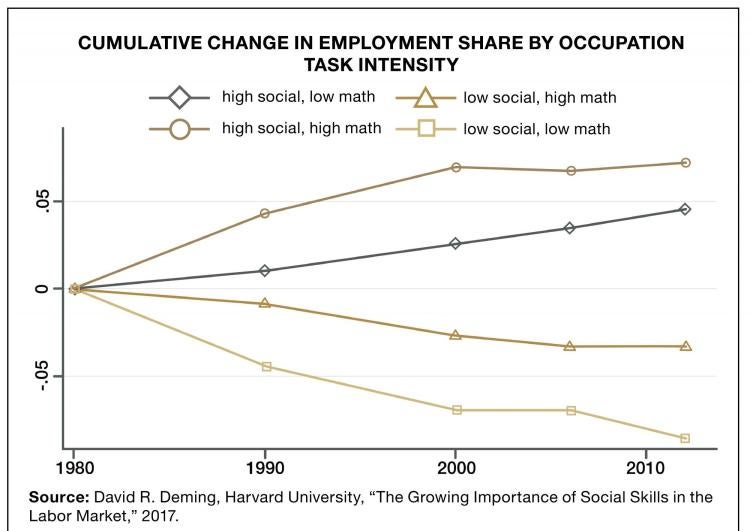Believe the liberal arts are dead as doornails? Think again.
Advocates rise to dispute reports of the demise of a time-tested education
Mark Twain once remarked that “reports of my death are greatly exaggerated.” That was funny. It was also memorable enough to have been repeated more or less constantly since.
But he didn’t say that, exactly. Let’s review the story and discuss why it matters.
In 1897, a reporter at the New York Journal informed Twain, then in London, of a report that Twain was impoverished and dying.
Twain said he understood the genesis of the rumor, noting that a cousin had been quite ill: “I have even heard it on good authority that I was dead,” he said, adding: “The report of my death was an exaggeration.”
The idea that Twain, famous worldwide, would die penniless in London was a compelling story. But it was not true, and the newspaper wisely checked the evidence before spreading a falsehood.
The liberal arts in higher education have a Mark Twain problem: There are many exaggerated reports of their death. A steady stream of news stories, opinion columns, blogs and television pundits have informed us over the last two decades that the liberal-arts education is a few breaths away from its death rattle.
Headlines have variously proclaimed that “Liberal arts degrees are useless,” that “There is no case for the humanities,” and that, bluntly, “Liberal arts majors are screwed.”
Today in the College of Arts and Sciences, the liberal arts—updated to include a broader range of subjects—remain central to the education of all students."
None of that is true, but steady repetition can give fiction a patina of prophecy.
This much is true: The falsehoods told about the liberal arts affected students’ behavior. Enrollment in these disciplines is down overall. Meanwhile, however, the career outcomes of liberal-arts graduates are good; the job market for workers with skills derived from the liberal arts is broad; and, importantly, those skills are key to students for the employment world of tomorrow.
Let’s first be clear on what we’re talking about.

WHAT ARE THE LIBERAL ARTS, ANYWAY?
The ancient Greeks had many good ideas. One of them, which we can credit to the city of Athens, was democracy, the foundation of our government and society. Another was that education—one that prepared citizens to steer the ship of state—was a foundation of democracy.
In Cicero’s thinking, autonomous individuals who earn the respect of their surrounding societies must be educated in a series of skills or practices to be effective citizens and stewards of democracy. He called these skills the artes liberales (“liberal arts”), and in their number he specifically includes geometry, music, literature, natural science, ethics and politics, including or especially skill in effective public speaking.
The fields we number among the liberal arts have grown in the 2,000 years since Cicero defined the notion, but the basic conception—the idea that the full range of these skills are needed to equip the citizens of free societies for full participation in democracy and in a life fulfilled on individual terms—remains the same.
Today in the College of Arts and Sciences, the liberal arts—updated to include a broader range of subjects—remain central to the education of all students. But the reports of their demise have had an effect.

ENROLLMENT HAS DIPPED
The Great Recession of 2007-09 was a tipping point. When the economy sputtered, American college students began turning away from degrees in history, philosophy and political science and opting to study science, technology, engineering or math—often called STEM.
Since then, U.S. college enrollment in liberal arts degrees has seriously declined. Nationwide, the numbers are stark:
• Philosophy and religious studies: down 15%.
• English literature and composition: down 22%.
• History: down 25%.
The trend has hit harder at CU Boulder, as these numbers show:
• Philosophy and religious studies: down 12%.
• English literature and composition: down 49%.
• History: down 57%.
Meanwhile, enrollment in the natural sciences, math and engineering has soared. Those trends are alarming because we need a broad range of workers—from all disciplines—in the new and emerging workplace.
I say this as a scientist who has spent decades studying how our planet functions and how the Earth’s climate is changing. Because humans are the major agents of change on the planet, this work has required that I understand how humans operate—the sphere of fields ranging from economics to ethics.
I’m a scientist who knows that a broad liberal-arts education is widely applicable, greatly needed and significantly helpful to job-seekers and the companies that hire them.
A liberal-arts education—one that exposes students to the breadth of human knowledge—conveys skills in critical thinking, communication and adaptability.
As the pace of social and technological change inexorably quickens, these skills are indispensable, not only to the employee possessing those skills, but also to the society in deep need for its citizens to exercise those skills.
That’s my well-grounded opinion. But don’t take my word for it. Reams of evidence buttress this point.
JOBS, SALARIES AND DEBT: BETTER THAN YOU THINK
First, people with college degrees—regardless of whether those degrees were in the arts and humanities, social sciences or natural sciences—enjoy consistently lower rates of unemployment than the rest of the workforce.
Second, getting a college degree pays big dividends: On average, college graduates earn $1 million more over the course of their careers than those who have only a high-school diploma.

Third, student debt is a real issue, but one that CU Boulder works hard to manage with scholarships and other support. For those Colorado residents who graduated from CU Boulder with a bachelor’s degree in 2018, the average debt was $24,400. For out-of-state students, the average was $32,100.
Those numbers are nothing to sneeze at. For in-state students, however, the debt is lower than the cost of a new Ford Taurus, and for out-of-state students, it’s about equal to a new Taurus with all the options.
Of course, the value of the Taurus will depreciate, while the college degree’s value will appreciate by almost a factor of 50. In short, your Taurus won’t take you nearly as far as your degree.
It must be noted that students who major in scientific, technological or engineering fields tend to earn higher salaries than those in the arts and humanities. It’s also true that starting salaries of students who majored in the arts and humanities tend to be lower than those in the natural sciences.
But let’s compare those who major in professional or pre-professional degrees with those with liberal-arts degrees:
When they reach their 50s and 60s, former students who majored in the social sciences or arts and humanities earned more, on average, than their peers who majored in professional or pre-professional fields, research from the Association of American Colleges and Universities concluded in 2014.
Data from CU Boulder alumni buttress this finding. Consider an exhaustive study of alumni who graduated from the CU Boulder College of Arts and Sciences in the last three decades.

That research, conducted by Emsi Alumni Insight, surveyed more than 25,000 alumni who graduated with bachelor’s degrees between 1989 and 2018 and calculated their average salary in 2018 as follows:
• $79,626: arts and humanities alumni
• $78,065: social sciences alumni
• $80,796: natural sciences alumni
By comparison, median household income in Colorado was $62,520 in 2017, the U.S. Census Bureau reports.
If you want to learn more about these stats, see the data visualization at http://bit.ly/alumstats. Those who seek evidence that the liberal arts are faltering will have to look elsewhere.
Diving into the data deepens the picture. As The Washington Post noted recently, it’s true that the typical computer-science major earns more right out of school than does the typical English major.
But in 2017, young English majors had a lower unemployment rate than math or computer science majors. And the pay gap closes as higher midcareer salaries in management and business occupations kick in—professions with larger numbers of liberal arts majors.

SIGNS AND REASONS FOR LIFE
Despite all the bad press, there are great reasons the liberal arts are still alive and kicking. First among them is that employers see the value in skills students derive from a liberal-arts education. And they’re willing to pay for those skills.
More than 84% of employers surveyed by the American Association of Colleges & Universities said recent graduates who wanted to win promotions and enjoy long-term success should have field-specific knowledge and a broad range of knowledge or skills.
Further, 93% of those employers said that job candidates’ ability to think critically, communicate clearly and solve complex problems well is more important than their undergraduate major.
Many other studies tell the same story: Companies need employees with well-honed skills in critical thinking and communication.
A particularly compelling example comes from Google, which is, at its core, an engineering firm, one that assumed the best workers would—obviously—be engineers. Google being Google, it tested its hiring hypothesis by crunching every bit and byte of hiring, firing and promotion data accumulated since the company’s incorporation in 1998, The Washington Post reported.
“Project Oxygen shocked everyone by concluding that, among the eight most important qualities of Google’s top employees, STEM expertise comes in dead last,” the Post noted.
The seven top characteristics of success at Google are all “soft” skills: being a good coach; communicating and listening well; possessing insights into others (including others’ different values and points of view); having empathy toward and being supportive of one’s colleagues; being a good critical thinker and problem solver; and being able to make connections across complex ideas.
Other studies reinforce this point. In 2019, economists Catharine B. Hill and Elizabeth Davidson Pisacreta, with support from the Andrew W. Mellon Foundation, issued a detailed analysis of the economic payoff of a liberal-arts education.
“Critics claim that a liberal arts education is worth less than the alternatives, and perhaps not even worth the investment at all. They argue that increasing costs and low future earnings limit the value of a liberal arts education, especially compared to alternative options such as pre-professional programs that appear to be better rewarded in the current labor market,” says the report, adding:
“Existing evidence does not support these conclusions.”
But money is only part of the picture. Other studies show that graduates of the humanities are not only gainfully employed but also—importantly—happy. A report issued by the American Academy of Arts & Sciences in 2018 notes that while humanities majors do make less money as they begin their careers than engineers or natural scientists, they felt comparable levels of satisfaction to those in engineering with the money they earned.
Why? The likely answer is that more than 70% of both humanities majors and engineers felt “deeply interested” in their work. We’re not all born to be engineers or STEM majors; doing what you love to do is far more important in the end and a much better predictor of success than chasing the lure of a higher salary.
All of this underscores the fact that the liberal arts are neither dead nor dying.
BUT WHAT ABOUT TOMORROW?
The past is often prologue, but the blistering pace of technological and social change today complicates our accuracy in predicting the workplace of tomorrow.
There’s good evidence, however, that students now in school can expect to change careers five to seven times. In many cases, the jobs they will perform do not yet exist, and skills they’ll need may have yet to be developed.
Preparing for such a world will require more than technical skills, as important as they are. Preparing for such a world means learning how to learn, to adapt and to articulate complexity clearly.
Preparing for such a world means learning how to learn, to adapt and to articulate complexity clearly."
In other words, skills in critical-thinking and communication will be necessary.
We see evidence of this already, in the workplace of the last decade. If the conventional wisdom about STEM education were true, we’d expect to see a particularly high demand for employees with math or technical skills but not other skills.
A recent study found just the opposite. That study, by Harvard University economist David Deming, found that jobs requiring high math and high social skills are rising, while jobs that require neither are shrinking, observations that should surprise no one.
However, the observation that jobs that require high social skills but low math skills are growing—while jobs requiring high math skills and low social skills have been declining for the past several decades— may indeed surprise people. The bottom line is that social skills and critical-thinking skills are both valuable and highly marketable. Similarly, Deming found, pay for people with high social skills has been rising.
Let’s be clear here: We need specialists, engineers, scientists and technicians. We also need historians, philosophers, poets, economists, linguists and political scientists.

Thriving in our rapidly growing and increasingly intertwined world requires that all of us pursue our passion and purpose. Our success as a representative democracy depends not only on clever technological advances, but also on our ability to understand ourselves, our humanness, our strengths and our weaknesses.
Next time you try out a particularly frustrating app that seems to be designed for a very technically literate human that does not commonly exist, remember that.
As we have seen, public opinion has wrongly portrayed the study of the liberal arts as irrelevant and futile. Drawn from hyperbole, that view is a myth. I’m happy to say that I’m not alone in pointing out the truth. In the last two years, a large and growing number of op-eds, news stories and blog posts have made the points that I’ve made here.
This brings us back to Mark Twain. When confronted with a rumor about Twain, a New York journalist checked the facts and published the truth. That’s my mission here.
That’s the kind of critical-thinking skill the world needed then, needs now and will need tomorrow.
It’s the kind of critical thinking skill that is part of the core of a liberal arts education. And that’s one of many reasons that reports of the liberal arts’ demise are, in fact, an exaggeration.
The ancients would be proud.
James W.C. White is interim dean of the College of Arts & Sciences.

